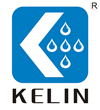Air dryer
A compressed air dryer is a device for removing water vapor from compressed air. Compressed air dryers are commonly found in a wide range of industrial and commercial facilities.
The process of air compression concentrates atmospheric contaminants, including water vapor. This raises the dew point of the compressed air relative to free atmospheric air and leads to condensation within pipes as the compressed air cools downstream of the compressor.
Excessive water in compressed air, either in the liquid or vapor phase, can cause a variety of operational problems for users of compressed air. These include freezing of outdoor air lines; corrosion of equipment; fouling of processes and products.
There are various types of compressed air dryers. Their performance characteristics are typically defined by the dew point.
Regenerative desiccant dryers, often called "regens" or "twin tower" dryers
Refrigerated dryers
Deliquescent dryers
Membrane dryers
Vapor is removed from compressed air to prevent condensation from occurring and to prevent moisture from interfering in sensitive industrial processes.
Characteristics
A regenerative desiccant dryer typically delivers a dew point of between -40°(-40C) F and -100°F (-73°C)
A refrigerated dryer delivers a dew point not lower than approximately 35°F (2°C)
A deliquescent dryer delivers a dew point suppression that fluctuates with air temperature. Typically this suppression is 20F below the compressed air temperature.
Refrigerated Dryer
Refrigeration dryers employ two heat exchangers, one for air-to-air and one for air to refrigeration. However, there is also a single TRISAB heat exchanger that combines both functions. The compressors used in this type of dryer are usually of the hermetic type and the most common gas used is R-134a. The goal of having two heat exchangers is that the cold outgoing air cools down the hot incoming air and reduces the size of compressor required. At the same time the increase in the temperature of outgoing air prevents re-condensation.
As of the year 2000, most manufacturers started producing energy saving dryers that do not make use of a hot-gas by pass. These dryers can save up to 40% in total energy and can consume only 10% of the max power when idle. They employ digital control and sometimes variable speed compressors.
Some manufacturers are marketing compressors with built in refrigeration dryers, but these have had a mixed acceptance in the market.
Commonly a coalesing prefilter is installed immediately upstream of a refrigerated dryer to remove lubricating oil and other contaminants that have the potential to foul the dryer's heat exchangers.
Deliquescent Dryer
A deliquescent dryer typically consists of a pressure vessel filled with a hygroscopic media that absorbs water vapor. The media gradually dissolves—or deliquesces—to form a solution at the base of the pressure vessel. The liquid must be regularly drained from the vessel and new media must be added. The media is usually in tablet or briquette form.
Deliquescent dryers have no moving parts and don't require electrical power for operation. Common applications therefore often involve remote, hazardous, or mobile worksites. Deliquescent dryers are used for removing water vapor from compressed air, natural gas, and waste gases such as landfill gas and digester gas.
The performance of a deliquescent dryer, as measured by outlet dew point, is highly dependent on the temperature of the air or gas being processed, with cooler temperatures resulting in better performance.
Desiccant Dryer
The term "desiccant dryer" refers to a broad class of dryers. Other terms commonly used are regenerative dryer and twin tower dryer, and to a lesser extent adsorption dryer.
The compressed air is passed through a pressure vessel filled with an adsorbent media such as activated alumina, silica gel, molecular sieve or other desiccant material. The desiccant can bring the dewpoint of the water vapor in the air down to -40 degrees Celsius or below. This means that the air will not condense (deposition) water until it is cooled to -40 degrees Celsius. In practice two cylinders with desiccant are used; one is drying the air, while the other vessel is being regenerated. The switching of the vessels and the regeneration sequence is typically done automatically via solenoid operated valves.
The regeneration of the desiccant vessel can be during three different methods:
Heatless "pressure-swing" drying which uses part of the dry compressed air coming from the other vessel to dry the desiccant in the vessel being generated at lower pressure.
Heated dryer, this can use a hot air blower, so there is no loss of compressed air.
Heat of compression. This can only be used with an oilfree compressor.
Membrane dryer
Membrane dryer refers to a dehumidication membrane that removes water vapor from compressed air. It is used in pneumatic components, air bearings, air spindles, medical equipment, air guns and pneumatic brakes for vehicles & trains.
Usage
Drying air for use in commercial or industrial processes that demand dry air:
Telecomm industry (pressurizes its underground cables to repel moisture and avoid shorts)
Painting
Pneumatic tools
Pneumatic control systems
Feed air for Zeolite type Oxygen and Nitrogen generators
Truck and Train Air brake systems.
?


